The Ultimate Hearthstone Druid Guide to Comboing People
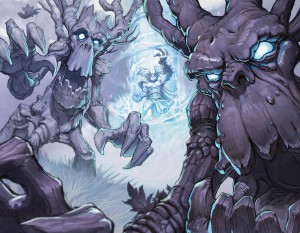
“Force of Nature” by Trevor Jacobs
We have used a lot of great art from the Warcraft universe in our posts and guides. If you want to support the content creators you can find “The Art of World of Warcraft” here.
Introduction
Midrange Druid has been a tournament winning deck for such a long time that most players have already build the deck months ago. For a new player Midrange Druid can be a relatively cheap and viable entry to the world of competitive Hearthstone. With an approximate cost of 4000 Dust and only Naxxramas being necessary for [Shade of Naxxramas], [Loatheb] and [Sludge Belcher] it is easily one of the cheapest tier 1 decks available.
At the last Hearthstone World Championships in 2015, 12 out of 16 players brought some variation of combo druid.
Example deck lists
League of Explorers Top 10 Legend List by Firebat
Neobility’s Finley Mrrgglton Druid
Hotform #2 World Championship 2015
General Strategy
Win Conditions:
Midrange Druid is an incredibly versatile deck that can win in several different ways. These three are the most common:
The most obvious certainly is to build a board and finish your opponent with the good old [Force of Nature] + [Savage Roar] combo. This happens in a good portion of games and should be your primary objective. Especially [Savage Roar] can put out enormous amounts of damage combined with a decent board. Always try to think of your following turns and calculate the damage you might be able to do.
Quick tip on calculating damage with [Force of Nature] + [Savage Roar]:
The combo alone is exactly 14 Damage. So if you have minions on board quickly add:
Sum of minion damage + [number of minions * 2] + 14
The second is to ramp into efficient threats like [Piloted Shredder] early with [Wild Growth] or [Innervate] to overwhelm the opponent and win on tempo. This is mostly draw dependent but can win pretty much any matchup with a perfect draw. One common mistake is to overextend early. Always try to think of your following turns and use your mana as efficiently as possible. You usually want to avoid a turn with unused mana crystals at all costs.
A third option is to outvalue your opponent with cards like [Ancient of Lore], [Dr. Boom] or [Azure Drake] and win a game on card advantage. This win condition is more complicated as Druid tends to use cards like [Innervate] for tempo which actually means you are losing card advantage. Outvalueing opponents is an option when you can efficiently deal with your opponents threats or they can’t efficiently deal with yours. For example in aggro matchups where you can [Keeper of the Grove] a [Knife Juggler] or a different two drop to create a 2-for-1 situation. In control matchups where your opponents uses single target removal like [Execute] or [Shadow Word: Death] to deal with your Ancient of Lore, winning by card advantage can be a route to victory.
Probably the most critical aspect of Midrange Druid is trying to understand your role in “Who’s the Beatdown”. We are going to go deeper into this in the matchup section.
Early Game (Turn 1-4):
The early game of Midrange Druid is usually approached in two ways: You can try to use [Wild Growth] and [Innervate] to ramp into cards like [Shade of Naxxramas], [Piloted Shredder], [Druid of the Claw] or [Azure Drake] to get an overwhelming board presence early. Alternatively, try to control the board with [Keeper of the Grove], [Swipe] and [Wrath]. Being proactive and ramping into threats is usually preferred in a significant portion of matchups. Playing reactively to control the board is a path that should only by chosen by necessity and not by choice. In short: Always try to ramp into threats unless you don’t have the appropriate cards in hand. [Keeper of the Grove] can be essential in many matchups in the early game as it presents a board and can clear an opponents early game minions or silence problematic ones like [Mad Scientist].
Mid Game (Turn 5-7):
This is where the deck shines. With its consistent ramp you should be ahead on the board in most matchups. Try to take efficient trades and dig for more cards with [Azure Drake] and [Ancient of Lore]. [Innervate] + [Emperor Thaurissan], [Dr. Boom], [Ancient of Lore] can be game-winning plays in the midgame. Druid has an increasingly hard time to come back on the board, so building a strong board presence in the mid game is very important. Try to protect your smaller minions like Deathrattle minions from [Piloted Shredder] or [Living Roots] tokens with taunts to gain the most damage off of a [Savage Roar] later.
Late Game (Turn 8+):
The late game is normally about the combo. You should usually try to build a board that threatens a combo kill on turns 7 and 8. Even if you don’t have the combo in hand. The threat of the combo can force (no pun intended) your opponents into taking inefficient trades. These inefficient trades like the aforementioned removal vs. [Ancient of Lore] can help you win the game of attrition (or card advantage) as well.
Core cards
The core of midrange druid has been the same for a long time. Let’s go over how these cards are used efficiently and identify some traps or possible mistakes beginners can make.
[Innervate] is the quintessential tempo card. You trade card advantage for an early board. A turn two [Piloted Shredder], Turn 4 [Emperor Thaurissan], Turn 5 [Ancient of Lore] or [Dr. Boom] can completely turn the game in your favor. One of the most common mistakes for beginners is to use it too early on a [Shade of Naxxramas]. You should usually only use it on turn 1 if you have other plays for turn 2 and 3.
[Wild Growth] is an interesting card. It doesn’t have an impact on the board at all and can be a liability against lightning fast aggressive decks. But it’s still one of the strongest cards in the deck. Getting an early [Wild Growth] on turn 2 is effectively like having a coin for each following turn. This card can lead to a lot of free wins and is at the heart of midrange druids continued success. Keep one in every mulligan.
[Wrath] is a flexible early game removal that can take care of problematic minions like [Knife Juggler] or set up efficient trades against an opposing [Piloted Shredder]. At worst it cycles (draws a card). So it’s usually never completely dead. A common mistake for beginners is to cycle it too frequently. In most games you want to use the 3 damage. Dealing one damage to a Paladin token or one-drop and drawing a card is rarely the correct choice.
[Savage Roar]
One of the strongest cards in Hearthstone in my opinion. You usually want to keep this card to finish your opponent. The amount of damage you can get for three mana can be absolutely incredible. To calculate the damage just count your minions (and add your hero) and multiply it by 2. In a best case scenario this card can deal up to 16 damage. Not bad for three mana. In difficult situations this card can be used to trade efficiently as well. Either by using your established minions or by trading with your hero and/or hero power. Removing troublesome minions like [Flamewaker] with [Savage Roar] can be one of the stronger unintuitive plays. Just remember that your chance to combo decreases significantly after playing your first [Savage Roar]. In that case you should try to win the game on tempo or card advantage.
[Shade of Naxxramas] can be incredible if it stays uncontested. You should usually try to play it as early as possible to make it grow to 3+ Health to dodge spells like [Consecration], or [Hellfire] and [Demonwrath]. Combined with the combo this card can finish games very quickly. Most beginners struggle to decide on when to attack with it. You can usually unstealth the Shade if your opponent has no conceivable way of removing it the next turn or it has grown enough to get significant value in trading.
[Big Game Hunter] is pretty much a necessity in Midrange Druid because most lists have problems in dealing with an opposing [Dr. Boom] or other high-cost minions.
[Swipe] is one of the only ways for a Druid to come back on a board and can provide some reach to finish your opponent in the late game as well. Combining [Azure Drake] and [Swipe] for the spell damage can sometimes win games on its own. Do not value [Swipe] too highly though. You are trying to play proactively. Thus, keeping it against any class but Paladin is usually wrong. And even in the case of Paladin only keep it if you have other plays as well. You want to proactively build a board.
[Piloted Shredder] is probably one of the most ubiquitous cards in Hearthstone. Good on offense, good on defense. Incredible value. We have been talking about the humble shredder in our Top 8 Cards to Craft When Starting Out in Hearthstone extensively so have a look at what makes it so great over there.
[Keeper of the Grove] is an all star against Hunter, Mage, Paladin and Warlock. [Mad Scientist] with either [Freezing Trap] or [Mirror Entity] is extremely strong vs. Druid. So the silence is a very important aspect of the card. It can be an answer for [Sylvanas Windrunner] or taunts as well. Early game it stifles aggro decks and helps to stabilize. These modal cards are what makes Druid so flexible.
[Loatheb] can help in more difficult matchups like Tempo Mage and Oil Rogue. It protects your board from board wipes and can give you important additional turns against combo decks.
[Azure Drake] is an important card in the mid game. Innervating this on turn 3 is one of the more common plays of the deck because it somewhat offsets the lost card by innervate. It has a decent sized body and can sometimes trade with one or two low drops. It is very bad against an opposing [Piloted Shredder] though so try to avoid playing into this scenario.
[Druid of the Claw] is another modal card that can take a variety of roles. Most of the time the Druid is taunted up to protect the early game and put more Health on the board. In a pinch it can finish off [Flamewaker]s or (combined with [Savage Roar]) even finish the game.
[Force of Nature] is one part of the combo that give the deck its name. You usually want to keep it in hand to finish the game with it but much like other cards in midrange druid, this card can be used to stabilize in the mid game as well. Remember that usually your win condition switches from comboing your opponent to a game of attrition in that case.
[Ancient of Lore] might be the card that holds this deck together. Because we use so many of our cards to gain tempo ([Innervate] and [Wild Growth]) we need to refill our hand in the midgame. The Ancient can easily be a 3-for-1 in this situation as it dodges most removal and weapons like [Truesilver Champion] or [Death’s Bite] and draws us two additional cards.
[Emperor Thaurissan] is an incredible combo enabler. If you have both combo pieces in hand when you play it, you can combo your opponent on turn 7. In case you draw it with an early [Innervate] it helps ramp out threats like [Dr. Boom] as well. Thaurissan is better the more cards you have in hand so drawing it early is very strong. Have a look at at our mulligan guide to see where you can keep it in your opening hand with the coin.
[Dr. Boom] is the boogeyman of Hearthstone and in pretty much every midrange deck. Innervating a [Dr. Boom] on turn 5 often wins the game on the spot. He is especially valuable against Rogues as well because it is hard to deal with without [Sap] and always leaves two Boom Bots behind. Considering the three bodies it is a spectacular way to fill up the board for a [Savage Roar].
Attacking the meta game: Card choices, options and tech cards
The cards mentioned in the core sections of this article are pretty much non-negotiable and build the engine for this deck to function correctly. Some of these cards vary in being played as one- or two-of. Have a look at the example deck lists to get a feel for different versions of the deck. To fill it up to 30 we have different options now:
[Living Roots] is a spectacular card if you are expecting a very aggressive meta game.
[Darnassus Aspirant] has been a staple of Druid since its release but has also been on the decline in recent months. It is a decent additional [Wild Growth] and can help in having a more consistent early game. The card’s inherent power level is pretty low though and it is a pretty bad top deck. Most decks are able to handle a 2/3 for 2 in the early game. So it usually trades for a one-drop against aggressive decks and dies to most weapons. It is a vanilla 2/3 most of the time. Still, it adds consistency to the deck and sometimes helps against a difficult matchup in Tempo Mage as a bait for [Mirror Entity].
[Ancient of War] can help against a variety of strategies including aggro and midrange decks. Play one on the lower legend ranks or if you are having trouble with decks like Zoo or Patron Warrior.
[Harrison Jones] can be great in a meta with a lot of weapons or if you want tech against Warrior and Paladin. In an unknown meta use Azure Drake instead.
Both [Raven Idol] and [Sir Finley Mrrgglton] are valuable options in the one-mana slot if you want to improve your control matchups and/or smoothen out your draws. Druid has very little one-mana plays and can sometimes leave mana crystals unused in later turns, so both cards can help fill the curve and make the deck more consistent. You should usually try to get Life Tap for control matchups with Sir Finley. Heal or Armor up can be valuable against face hunters as well. You should not keep [Raven Idol] in your mulligan. Hero-specific creatures are 4x as likely so you can somewhat predict what creatures you are gonna get. You can only get Druid spells from it when playing Druid, so the card selection is somewhat predictable there as well.
[Mounted Raptor] is a new addition with League of Explorers and provides an alternative to Shade of Naxxramas. It tends to trade more effectively against aggressive decks and usually leaves a minion behind. Try using the raptor if the meta is very fast.
[Sludge Belcher] has been in and out of Druid lists for quite a while. It has always been a great choice against aggro decks and is very rarely a bad card. There are just so many alternatives. [Druid of the Claw] is very versatile and can act as a removal spell and a way to finish they game while providing a decent taunt minion in the aggro matchups. [Azure Drake] is necessary to fill up your hand after dumping it early. In general take out a Drake if you want to win against aggro decks and leave it in to better the control matchups.
[Sylvanas Windrunner] is great against creature based matchups like Paladin or Warlock. It is yet another great minion to [Innervate] out on turn 4. Play her if you want to improve your midrange matchups.
Deck list conclusion: Midrange druid can be build very differently depending on your metagame. Try to improve your deck constantly and attack your opponents from different angles. There is no single best list. The meta of the ladder and tournaments change constantly. You should too.
Matchups and Mulligans
Mana efficiency is very important when playing Druid. We want to curve out as perfectly as possible so I’m going to include mulligans with and without the coin.
In this section we are taking a look at the expected win rate (so wether we are favored or not), the mulligans and the matchup strategy.
Keep against every class:
[Wild Growth], [Innervate], [Darnassus Aspirant] and if you don’t have another play [Shade of Naxxramas].
Against Druid: Even. / Slightly unfavored against Aggro Druid.
Without Coin: Keep [Piloted Shredder]. With [Innervate] keep [Druid of the Claw] and [Azure Drake].
With Coin: Keep [Piloted Shredder]. With [Innervate] keep [Druid of the Claw], [Azure Drake] and [Emperor Thaurissan].
[Wild Growth] and [Innervate] are key in this matchup. This matchup is usually decided by tempo. If you know your opponent is playing Aggro Druid keep a [Big Game Hunter].
Against Priest: Even.
Without Coin: Keep [Piloted Shredder]. With [Innervate] keep [Druid of the Claw], [Azure Drake], [Loatheb] or [Sludge Belcher].
With Coin: Keep [Piloted Shredder]. With [Innervate] keep [Druid of the Claw], [Azure Drake], [Loatheb], [Sludge Belcher] or [Emperor Thaurissan].
Try to keep the pressure up early but don’t overextend into [Auchenai Soulpriest]. Remember to play around [Lightbomb] on Turn 6 and try to set up a combo finish. [Azure Drake] is strong in this matchup as it can’t be [Shadow Word: Death]ed. Try to not play into [Cabal Shadow Priest] with your [Keeper of the Grove]s.
Against Hunter: Favored against Face-Hunter / Unfavored against Midrange.
Without Coin: Keep [Wrath], [Keeper of the Grove], [Living Roots]. With [Innervate] keep [Piloted Shredder], [Druid of the Claw] or [Sludge Belcher]
With Coin: Keep [Wrath], [Keeper of the Grove]. With [Innervate] keep [Piloted Shredder], [Druid of the Claw] or [Sludge Belcher].
[Keeper of the Grove] is the most important card in this matchup. Either for silencing a [Mad Scientist] or a [Savannah Highmane]. [Freezing Trap] is less of a problem in lists with [Living Roots]. Consider using [Force of Nature] to clear and or proc [Freezing Trap] against midrange. Try to think several turns ahead and race them when you can see a finish with [Savage Roar].
Against Paladin: Even.
Without Coin: Keep [Wrath], [Keeper of the Grove], [Living Roots]. With [Innervate] keep [Piloted Shredder], [Druid of the Claw] or [Sludge Belcher]
With Coin: Keep [Wrath], [Keeper of the Grove]. With [Innervate] keep [Piloted Shredder], [Druid of the Claw] or [Sludge Belcher].
Midrange Paladin can be a little bit easier than Secret Paladin. Try to be the beatdown in both matchups. You can overextend against Secret Paladin but try to play around [Equality] + [Consecration] against Midrange and Murloc Paladin. Again, Silence from [Keeper of the Grove] can be very valuable.
Against Mage – Freeze Mage: Very favored. / Tempo Mage: Very unfavored.
Without Coin: Keep [Wrath], [Keeper of the Grove]. With [Innervate] keep [Piloted Shredder], [Druid of the Claw] or [Sludge Belcher]
With Coin: Keep [Wrath], [Keeper of the Grove]. With [Innervate] keep [Piloted Shredder], [Druid of the Claw] or [Sludge Belcher].
Tempo Mage is one of our most difficult matchups. If you know you are playing against a Freeze Mage you don’t need to keep the [Wrath]. Use [Keeper of the Grove] to silence or clear [Flamewaker] and [Mad Scientist]. You can try to use [Darnassus Aspirant] or [Sir Finley Mrrgglton] to proc [Mirror Entity] as well. Against Freeze Mage just play on a decent curve and keep the [Keeper of the Grove] for the eventual [Doomsayer]. Don’t play more than 6 minions or your board is full and you can’t play Keeper!
Against Rogue: Slightly Unfavored.
Without Coin: Keep [Wrath], [Piloted Shredder], [Dr. Boom]. With [Innervate] keep [Druid of the Claw], [Azure Drake] or [Loatheb].
With Coin Keep [Wrath], [Piloted Shredder], [Dr. Boom]. With [Innervate] keep [Druid of the Claw], [Azure Drake], [Loatheb] or [Emperor Thaurissan].
[Loatheb] and [Dr. Boom] are the key cards in this matchup. Try to set up a combo finish with both of these. Try to get battlecry value out of your minions to play around sap. [Harrison Jones] can be a decent tech card here.
Against Shaman: Slightly Unfavored.
Without Coin: Keep [Wrath], [Piloted Shredder]. With [Innervate] keep [Druid of the Claw], [Azure Drake] or [Loatheb].
With Coin: Keep [Wrath], [Piloted Shredder]. With [Innervate] keep [Druid of the Claw], [Azure Drake], [Loatheb] or [Emperor Thaurissan].
Kill the [Tunnel Trogg] at all costs. Even if you have to use a [Savage Roar]. Try to heal up with [Ancient of Lore] in the later stages of the game. They can easily do 14+ damage from hand.
Against Warlock: Unfavored against Zoolock / Favored against Reno-, Hand- and Malylock.
Without Coin: Keep [Wrath], [Keeper of the Grove], [Piloted Shredder]. With [Innervate] keep [Druid of the Claw] or [Azure Drake].
With Coin: Keep [Wrath], [Keeper of the Grove], [Piloted Shredder]. With [Innervate] keep [Druid of the Claw], [Azure Drake] or [Emperor Thaurissan].
If an opponent kept 0 cards you can keep a [Big Game Hunter] because it’s more likely to be a slower Handlock or Renolock. Just play your threats and set up a big combo turn. Clear the board as much as possible and try to play around [Hellfire] and [Shadowflame]. Against Zoolock its much more difficult. Try to keep [Swipe] in hand as long as possible and clear an [Imp-losion] or combo it with [Azure Drake]. Try to [Keeper of the Grove] a [Nerubian Egg].
Against Warrior: Unfavored against Patron Warrior / Favored against Control Warrior
Without Coin: Keep [Piloted Shredder] . With [Innervate] keep [Druid of the Claw] and [Azure Drake].
With Coin: Keep [Piloted Shredder] and [Shade of Naxxramas]. With [Innervate] keep [Druid of the Claw], [Azure Drake] and [Emperor Thaurissan].
The Control Warrior matchup is pretty straight forward. Play threats, prioritize playing [Azure Drakes] and [Ancient of Lore] and set up a big combo turn. Keep your [Shade of Naxxramas] stealthed until it grows out of weapon range. Patron Warrior is much more difficult. Try to reduce their card draw to a minimum by silencing [Acolyte of Pain] and clearing the board as much as possible to play around [Battle Rage]. Play aggressively and try to take risks. There is not much you can do to remedy a board full of patrons.
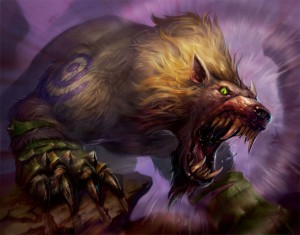
“Savage Roar” – By Grace Liu
Conclusion
Midrange Druid is one of the oldest decks in Hearthstone that is still getting significant tournament play. Even after all this time it is still one of the best choices to go into an unknown meta game. It has decent matchups against a variety of popular decks and can beat pretty much every deck with a decent draw.
It is cheap to craft, relatively easy to play and suprisingly hard to master. It has been a mainstay in competitive Hearthstone for a long time and will probably exist even longer. I’d argue every Hearthstone player worth his salt has to understand how this deck functions and it is a great starting point for new players who are just starting out.
Thanks for reading our first Hearthstone Druid Guide.

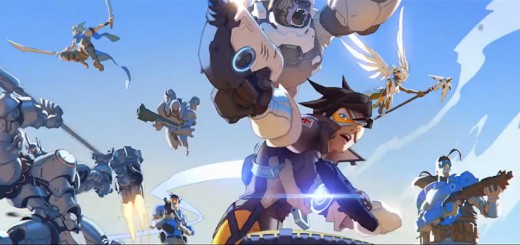

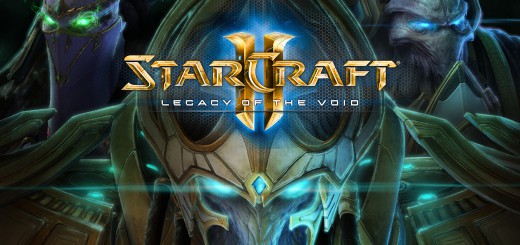


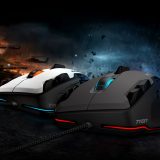




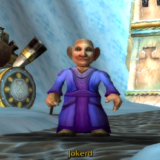
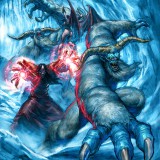
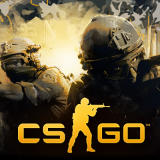
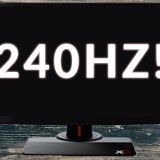








Great guide! I’ve already been playing Midrange Druid for a while but it helped me out a lot 🙂
One question though, i’m still having quite some trouble with the control warrior matchup, i just can’t seem to win it and i’m supposed to be in favour.. Any extra tips?
best guide ever
Why no swipe against paladin? Isn’t it good against muster for battle?
Greate guise man. Tks a lot
Great guide, the matchups and mulligan section is awesome
Great guide! Really gets in the depths of what the deck is meant for. Quick mention though, there’s a typo in the Loathed section: it’s a board wipe, not a board whipe.
Fixed it! Glad you enjoyed it!
Thanks for posting. And, I was so happy to find this site on the Google world.
Setups can differ from player to player. Pro players like Trump or Amaz use a variety of different mice, keyboards and monitors.
I’ve recently found it pretty appealing to follow the Coins Game blog which covers the latest trends to become even more efficient in this entertainment activity https://coins.game/blog/en/. Thus, if you’re considering engaging in this pastime, it may be a worthy idea to subscribe to this resource.
I’ve lately discovered the Coins Game blog, which covers the latest trends in order to become even more efficient in this recreational activity. idle breakout